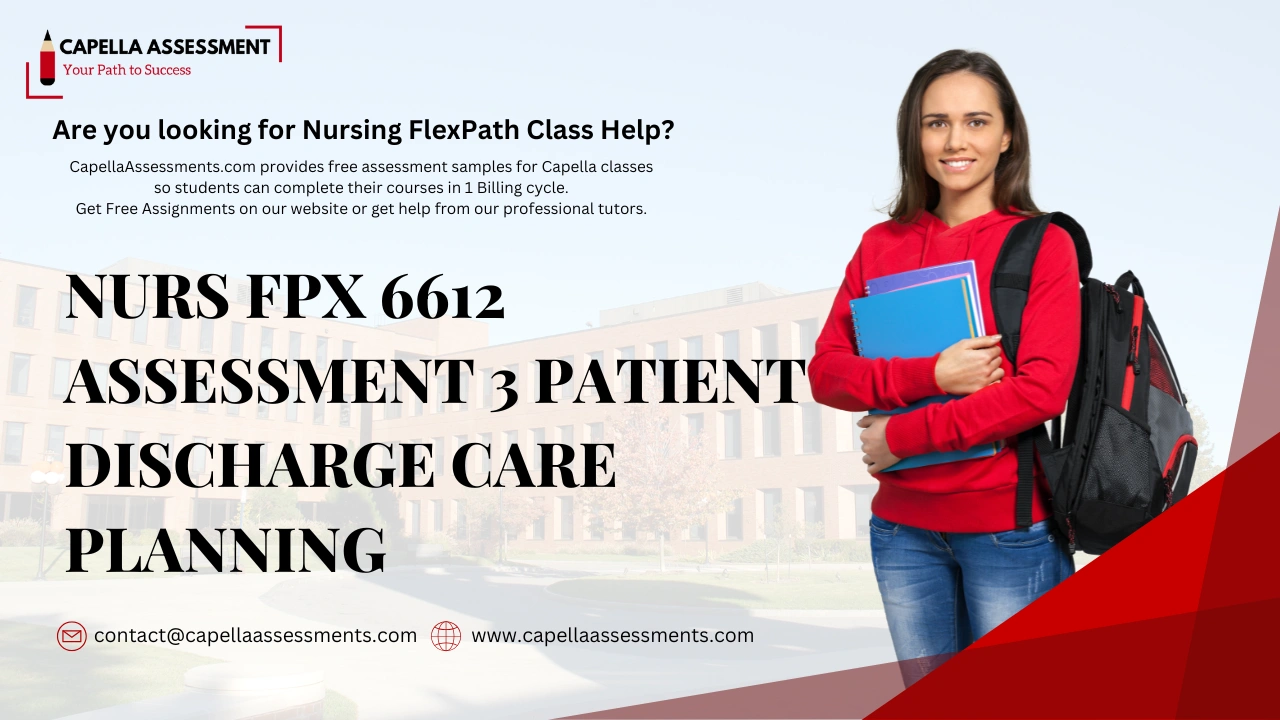NURS FPX 6614 Assessment 2 Enhancing Performance as Collaborators in Care
NURS FPX 6614 Assessment 2 Enhancing Performance as Collaborators in Care Name Capella university NURS-FPX 6614 Structure and Process in Care Coordination Prof. Name Date Enhancing Performance as Collaborators in Care Enhancing Interprofessional Collaboration for Chronic Heart Failure (CHF) Care Effective collaboration among healthcare professionals is crucial for optimizing patient outcomes in Chronic Heart Failure (CHF) care. CHF affects over 6.2 million adults in the United States and is a leading cause of hospitalization, particularly among older adults (Bhatnagar et al., 2022). The integration of interprofessional collaboration enhances coordination and communication among healthcare providers, ensuring comprehensive and patient-centered care. By fostering collaboration among cardiologists, nurses, dietitians, and pharmacists, a more holistic approach to CHF management can be achieved. To enhance interprofessional collaboration, it is essential to conduct a thorough assessment of current practices, identifying potential gaps in communication and care delivery. Establishing structured care frameworks and standardized procedures facilitates better coordination among team members (Raat et al., 2021). Additionally, electronic health records (EHRs) serve as a valuable tool for real-time information sharing, minimizing fragmentation in patient care. Continuous education and training are also fundamental in reinforcing teamwork, as ongoing learning initiatives equip healthcare providers with the necessary skills to collaborate effectively (McMahon et al., 2024). Educational Services, Digital Health Tools, and Support Resources Providing CHF patients with educational resources is vital for effective disease management. Programs like the American Heart Association’s (AHA) Heart Failure: A Guide for Patients and Their Families offer valuable insights on medication adherence and lifestyle modifications (Heidenreich et al., 2022). Similarly, the Living Well with Heart Failure workshop by the Heart Failure Society of America (HFSA) educates patients on symptom management, physical activity, and dietary adjustments (Clements et al., 2022). Digital health tools, such as mobile applications and telehealth platforms, further enhance CHF care. Applications like MyHeartCounts by Stanford Medicine and MyChart by Epic Systems enable patients to track symptoms, receive medication reminders, and access educational content, fostering greater engagement in self-care (Christle et al., 2020). Telehealth platforms, including Teladoc and Amwell, provide remote consultations, ensuring continuity of care for patients with mobility or transportation challenges (Yadav, 2024). Support groups and community health programs also play a crucial role in CHF management. Initiatives such as the Heart Failure Support Group by the National Heart, Lung, and Blood Institute (NHLBI) offer peer support and shared experiences for patients, while the Better Choices, Better Health program provides tailored resources like exercise classes and nutritional counseling (White-Williams et al., 2020). Moreover, ongoing training for healthcare professionals, such as the Heart Failure Symposium by the American College of Cardiology (ACC), ensures that providers stay informed about advancements in CHF care (Heidenreich et al., 2022). Ethical Considerations and Proposed Outcomes Adherence to ethical principles is fundamental in optimizing CHF care. The principles of beneficence, non-maleficence, justice, and autonomy guide patient-centered initiatives, such as the Heart Failure Transitional Care Program at the Cleveland Clinic, which prioritizes equitable access to care (Raat et al., 2021). Implementing structured care coordination models ensures that interventions are designed to improve patient well-being while minimizing harm. Programs addressing disparities in healthcare access, such as those developed by the American Heart Association, further support ethical CHF care (Heidenreich et al., 2022). The anticipated outcomes of enhanced interprofessional collaboration include reduced hospital readmissions, improved medication adherence, and greater patient self-management skills. Research indicates that structured communication protocols and regular team meetings contribute to better care coordination, ultimately leading to positive health outcomes (Kho et al., 2022). However, challenges such as varying levels of provider engagement and EHR integration must be addressed through ongoing training and feedback mechanisms. By fostering a culture of continuous improvement, interprofessional collaboration can be strengthened to enhance CHF management and patient quality of life. Table Format: Enhancing Performance in CHF Care Key Area Description Supporting References Interprofessional Collaboration Facilitates teamwork among healthcare providers, improving communication and coordination in CHF care. Raat et al. (2021) Assessment of Care Practices Identifies gaps in care coordination and communication among CHF care teams. McMahon et al. (2024) Structured Care Frameworks Defines roles and responsibilities for multidisciplinary teams to enhance clarity in CHF management. King-Dailey et al. (2022) Use of Electronic Health Records Supports real-time data sharing and reduces fragmentation in patient care. Yadav (2024) Education and Training Provides ongoing learning opportunities to strengthen interprofessional teamwork. White-Williams et al. (2020) Patient Education Resources Programs like AHA’s Heart Failure Guide and HFSA’s Living Well with Heart Failure offer education on CHF self-management. Heidenreich et al. (2022); Clements et al. (2022) Digital Health Tools Apps like MyHeartCounts and MyChart facilitate symptom tracking and patient engagement. Christle et al. (2020) Telehealth Services Platforms like Teladoc and Amwell enhance remote monitoring and virtual consultations for CHF patients. Yadav (2024) Support Groups & Community Programs Groups such as Heart Failure Support Group and Better Choices, Better Health provide peer support and lifestyle guidance. White-Williams et al. (2020) Ethical Considerations Ensures beneficence, non-maleficence, justice, and autonomy in CHF care. Raat et al. (2021) Improved Patient Outcomes Reduces hospital readmissions, enhances medication adherence, and promotes patient self-care. Kho et al. (2022) Challenges & Considerations Provider engagement and seamless EHR integration remain challenges in implementing collaborative CHF care. Yadav (2024) References Bhatnagar, R., Fonarow, G. C., Heidenreich, P. A., & Ziaeian, B. (2022). Expenditure on heart failure in the United States. JACC: Heart Failure, 10(8), 571–580. https://doi.org/10.1016/j.jchf.2022.05.006 Christle, J. W., Hershman, S. G., Torres Soto, J., & Ashley, E. A. (2020). Mobile health monitoring of cardiac status. Annual Review of Biomedical Data Science, 3(1), 243–263. https://doi.org/10.1146/annurev-biodatasci-030220-105124 Clements, L., Frazier, S. K., Lennie, T. A., Chung, M. L., & Moser, D. K. (2022). Improvement in heart failure self-care and patient readmissions with caregiver education: A randomized controlled trial. Western Journal of Nursing Research, 45(5), 019394592211412. https://doi.org/10.1177/01939459221141296 Heidenreich, P. A., et al. (2022). 2022 AHA/ACC/HFSA guideline for the management of heart failure. Circulation, 145(18). https://doi.org/10.1161/cir.0000000000001063 Kho, A. N., et al. (2022). The National Heart Lung and Blood Institute disparities elimination through coordinated interventions. Health Services Research, 57(S1), 20–31. https://doi.org/10.1111/1475-6773.13983 NURS FPX 6614 Assessment 2 Enhancing Performance as Collaborators in Care McMahon, J., et al. (2024). Heart failure in nursing homes: A scoping review. International Journal of Nursing Studies Advances, 6, 100178. https://doi.org/10.1016/j.ijnsa.2024.100178 Raat, W., Smeets, M., Janssens, S., & Vaes, B. (2021). Impact of primary care










